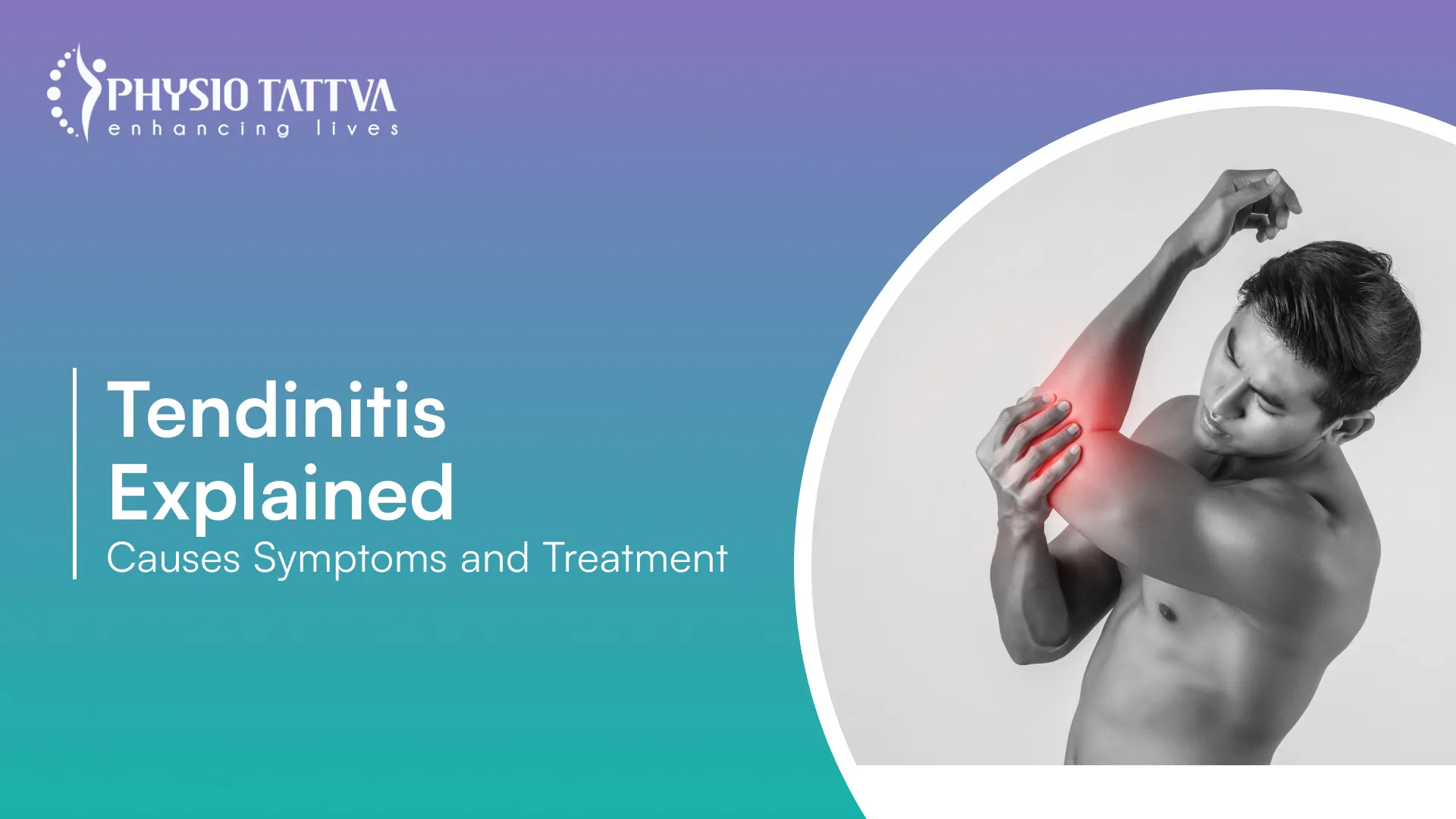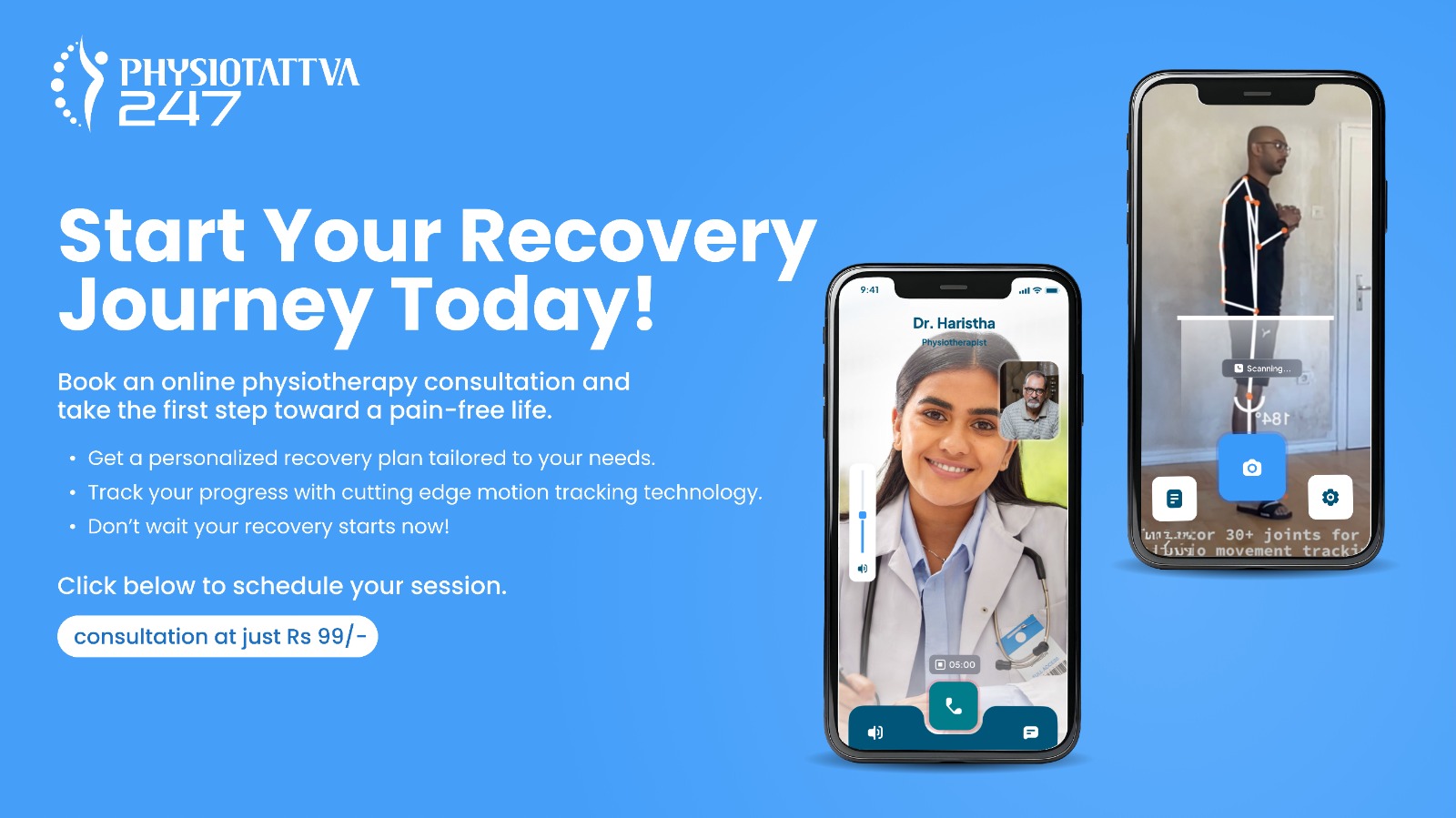Introduction
Tendinitis, characterized by tendon inflammation from overuse, causes pain, swelling, and restricted movement. Treatment involves rest, ice, anti-inflammatories, and a gradual return to activity. Physical therapy enhances healing, addressing muscle imbalances. Severe cases might require corticosteroid injections or, rarely, surgery. Early intervention ensures effective recovery and prevention of chronic issues. Read on to learn more about the symptoms and best ways to treat the condition.
An Overview of Tendons and Tendinitis
Tendinitis is a condition in which a tendon undergoes inflammation due to repetitive motions or excessive usage. It leads to pain, swelling, and restricted joint movement in the affected area. Tendons are bands of thick fibrous cords that attach the muscle to the bones. When there is an overuse or injury to the tendons, it results in tendinitis. It is more prone to occur in the shoulders, elbows, knees, and wrists.
Tendinitis vs. Tendinosis
Tendinitis involves acute tendon inflammation due to overuse, causing pain and swelling. Conversely, Tendinosis is a chronic condition where the tendon's structure degenerates due to repetitive strain without proper healing. It leads to pain and dysfunction. Treatment for tendinitis focuses on reducing inflammation, while tendinosis management targets promoting tissue regeneration and strengthening through physical therapy and exercises.
Types of Tendinitis
There are several types of Tendinitis, as the condition occurs in several body areas. Based on the area impacted, Tendinitis is classified as below.
Tennis Elbow (Lateral Epicondylitis)
Lateral epicondylitis, known as tennis elbow, is caused by the repetitive use of the muscles in the forearm, leading to pain and tenderness in the outer part of the elbow. Activities like gripping and lifting can trigger pain. Rest, ice, physical therapy, anti-inflammatory medications, and braces alleviate symptoms and promote healing.
Runner's knee (Jumper's Knee)
Runner's knee, or patellofemoral pain syndrome, is characterized by pain around the kneecap during activities like running or jumping. Overuse, muscle imbalance, and improper alignment can contribute. Treatment includes rest, ice, anti-inflammatories, physical therapy, and strengthening exercises. Addressing biomechanical factors and modifying activities help alleviate symptoms and prevent recurrence for runners and athletes.
Achilles Tendinitis
Achilles tendinitis is a prevalent condition marked by the inflammation of the Achilles tendon, which is the fibrous band linking the muscles of the calf to the bone in the heel. It typically results from repetitive stress or overuse, causing pain, swelling, and stiffness in the back of the heel. Athletes, especially runners and those involved in high-impact sports are prone to this condition. Treatment involves rest, ice, compression, elevation (RICE), and anti-inflammatory medications. Physical therapy aims to strengthen the calf muscles, improve flexibility, and address biomechanical issues contributing to the condition.
Rotator Cuff Tendinitis
Rotator cuff tendinitis involves inflammation of the tendons in the shoulder's rotator cuff. Overuse or strain can lead to pain, especially during overhead activities. Rest, ice, anti-inflammatories, and physical therapy are used for treatment.
Trigger Finger or Thumb
Trigger finger or thumb, medically termed stenosing tenosynovitis, results from inflammation in the tendon sheath, causing the finger or thumb to catch or lock when bent. Repetitive hand use, diabetes, and rheumatoid arthritis can contribute.
Understanding the Causes of Tendinitis
Tendinitis is a common condition and can impair your day-to-day functions. Understanding the causes can help mitigate the condition and plan treatment options. Here are some common causes.
- Overuse or Repetitive Movements: Repeated stress or strain on a tendon due to activities like sports, typing, or lifting heavy objects.
- Age: With increasing age, tendons experience reduced flexibility and an elevated vulnerability to injuries.
- Poor Technique: Incorrect posture or technique during physical activities can strain tendons.
- Biomechanical Factors: Muscle imbalances, poor alignment, or structural issues affecting joint mechanics can contribute.
- Sudden Intensity Increase: Rapidly intensifying workouts or activities without proper conditioning.
- Medical Conditions: Conditions like diabetes, rheumatoid arthritis, or gout can increase susceptibility to tendinitis.
- Certain Occupations: Jobs requiring repetitive movements can raise the risk.
- Inadequate Rest and Recovery: Insufficient time for tendons to heal between activities.
- Improper Equipment: Using equipment that doesn't support proper body mechanics can strain tendons.
Recognizing the Symptoms of Tendinitis
Some common symptoms of Tendinitis are as follows:
- Pain: Gradual onset of pain around the affected tendon worsens with movement or activity.
- Tenderness: The area around the tendon becomes tender to touch.
- Swelling: Mild to moderate swelling near the affected tendon.
- Stiffness: Reduced range of motion due to discomfort and swelling.
- Localized Heat: The affected area might feel warmer due to inflammation.
- Creaking Sensation: Some individuals might experience a creaking or crackling sensation during movement.
- Weakness: Tendinitis can lead to weakened muscle strength in the affected area.
- Painful Movements: Specific movements or activities aggravate the pain.
- Gradual Onset: Symptoms often develop over time, particularly with overuse or repetitive motions.
Diagnosing Tendinitis
Diagnosing tendinitis involves a medical evaluation based on symptoms, medical history, and physical examination. Imaging tests like X-rays, ultrasound, or MRI can help assess the extent of damage and rule out other conditions. Doctors may perform specific tests to replicate symptoms and pinpoint the affected tendon. Accurate diagnosis guides treatment recommendations, including rest, ice, medication, physical therapy, and lifestyle modifications. A comprehensive evaluation and management plan may require additional tests or consultations with specialists.
Tendinitis Treatment Options
Tendinitis can be managed and cured with several treatment options. Rest and physical therapy are adequate as they allow the tendons to heal from any stress. Here are some treatment options for Tendinitis.
Rest and Activity Modification
Rest and activity modification are essential in tendinitis management. Rest allows the affected tendon to heal and inflammation to subside. Gradually reintroduce activity while avoiding movements that worsen symptoms. Revise your activities to lessen the strain on the affected area and consider ergonomic changes. Balancing rest with controlled activity helps prevent overuse, supports healing, and minimizes the risk of recurrent tendinitis flare-ups.
Hot and Cold Therapy
Hot and cold therapy are effective for tendinitis. Cold packs reduce inflammation and numb pain, while heat promotes blood flow, relaxes muscles, and eases stiffness. Alternating between the two can aid in pain relief and healing.
Physical Therapy
Physical therapy for tendinitis alleviates pain, improves flexibility, and strengthens muscles. Therapists design customized exercise programs, including stretches and strengthening exercises, to address muscle imbalances and promote proper movement patterns, aiding tendinitis recovery and preventing recurrence.
Pain Relievers
Pain relievers like nonsteroidal anti-inflammatory drugs (NSAIDs) alleviate tendinitis discomfort by reducing inflammation and pain. Over-the-counter or prescribed NSAIDs help manage symptoms. However, long-term use should be monitored by a healthcare professional due to potential side effects. Consultation ensures appropriate usage and consideration of individual health factors.
Extracorporeal Shockwave Therapy (ESWT)
Extracorporeal Shockwave Therapy (ESWT) is a non-invasive treatment for tendinitis. High-energy shock waves are directed to the affected area, stimulating blood flow, tissue repair, and reducing pain. ESWT can promote healing and improve function, making it a valuable option for tendinitis management, mainly when conservative measures have not provided sufficient relief.
Ultrasound and Laser Therapy
Ultrasound therapy employs high-frequency sound waves to penetrate tissues, promoting healing and reducing inflammation in tendinitis. Laser therapy uses light energy to stimulate cellular activity, aiding tissue repair and pain reduction. Both modalities can complement tendinitis treatment by accelerating recovery and alleviating discomfort. To gain more knowledge about managing pain using this technique, it is recommended to seek the advice of a trained physical therapist.
Surgery (In Rare Cases)
Surgery is considered for severe tendinitis cases unresponsive to conservative treatments. Procedures may involve removing damaged tissue, repairing or reinforcing tendons, or addressing underlying issues. When other approaches are ineffective, surgical intervention aims to restore function, alleviate pain, and enhance overall quality of life.
Risk Factors for Tendinitis
Risk factors for tendinitis include repetitive movements, overuse, improper technique, sudden intensity increase in activity, age-related changes in tendon structure, muscle imbalances, inadequate warm-up, poor conditioning, and certain medical conditions like diabetes, rheumatoid arthritis, or gout. Identifying these factors aids in prevention strategies, promoting tendon health, and minimizing the risk of developing tendinitis.
Complications of Tendinitis
Untreated or improperly managed tendinitis can lead to complications such as chronic pain, reduced joint mobility, weakened muscles, and impaired functional ability. Over time, recurrent inflammation may cause tendon degeneration, increasing the risk of tendinosis. Additionally, pain-related compensatory movements can contribute to imbalances and secondary injuries. Prompt and appropriate treatment is crucial to prevent these complications and support full recovery.
Preventing Tendinitis
Preventing tendinitis involves several measures:
- Proper Technique: Use correct posture and technique during activities to minimize strain on tendons.
- Gradual Progression: Gradually increase activity intensity and duration to allow tendons to adapt.
- Adequate Warm-Up: Prioritize warming up with dynamic stretches to increase blood flow and prepare muscles.
- Balanced Conditioning: Include strength and flexibility exercises to prevent muscle imbalances.
- Rest and Recovery: Allow ample rest between intense activities and avoid overuse.
- Ergonomic Practices: Use ergonomic equipment and workspaces to minimize strain.
- Healthy Lifestyle: Maintain a balanced diet, stay hydrated, and manage underlying medical conditions.
- Appropriate Footwear: Choose footwear that supports proper biomechanics during activities.
- Listen to Your Body: Address discomfort promptly and adjust activities to avoid strain.
By implementing these strategies, you can reduce the risk of tendinitis and promote overall tendon health.
When to Seek Professional Help
Seek professional help if you experience persistent or worsening pain, swelling, or restricted movement around a tendon. If symptoms interfere with daily activities, affect multiple areas, or if you have a history of tendinitis, consult a healthcare provider. Early intervention aids accurate diagnosis and proper management, preventing complications and ensuring an effective recovery. If severe pain, sudden injury, or loss of function occurs, seek medical attention promptly.
Keep Tendon Inflammation at Bay with Physiotattva
Our specialized approach identifies risk factors, develops personalized treatment strategies, and provides comprehensive care. Our team works towards prioritizing preventive measures to ward off tendinitis, mitigating risks, and avoiding complications. Empower yourself with expert guidance to ensure optimal tendon health. Contact us today for a tailored plan to safeguard against inflammation and complications with Physiotattva's expertise.
Frequently Asked Questions
What is the main cause of tendinitis?
The main cause of tendinitis is repetitive stress or overuse, which strains the tendon and leads to inflammation and pain.
What is the best way to treat tendinitis?
The best treatment of tendinitis includes rest, ice, anti-inflammatories, physical therapy, and a gradual return to activity while avoiding aggravating movements.
Does tendinitis go away on its own?
Mild cases of tendinitis might improve with rest and self-care, but more severe cases often require medical intervention for full recovery.
Can tendinitis affect any part of the body?
Yes, tendinitis can affect various body parts, including the elbows, shoulders, wrists, knees, heels, and other tendons.





.webp)
.webp)

-min.webp)

